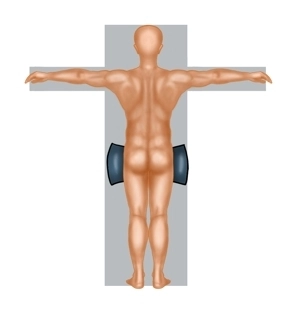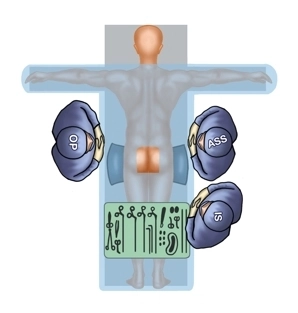- Chronic pilonidal sinus
- Pilonidal sinus with acute abscess
-
Indications
-
Contraindications
- Asymptomatic pilonidal sinus without signs of inflammation does not require treatment. The patient should be informed that it may progress to a chronic or acute infection with abscess formation. Follow-up of these patients reveals that over time they are not truly asymptomatic but simply suffer from very few symptoms and will have to undergo surgery sooner or later.
- Radical excision in the abscess stage is uncertain and is associated with a high recurrence rate (up to 41%), as this is often carried out as an emergency and then by an inexperienced surgeon. In addition, complete excision of the wound will often be unnecessarily extensive because of the swelling. Therefore, the first step should be to unroof the abscess to ensure effective drainage. This is followed by radical excision during the infect-free stage 7-10 days later.
-
Preoperative diagnostic work-up
If pilonidal sinus is suspected, first note risk factors such as excessive body hair, copious sweating, obesity, and poor personal hygiene. Differential diagnosis then must first establish whether there is:
- A porus without inflammation
- Sinus with acute abscess formation
- Sinus with chronic secretion
Ultrasound, CT or MRI are not required.
-
Special preparation
In porus without inflammation, inform the patient about the course of the disease, in particular about the fact that spontaneous healing is not possible, and that malignant transformation may be possible in very rare cases (see above). Schedule the patient for annual follow-ups.
In case of acute abscess, the typical signs of a soft tissue abscess with local redness, warmth and swelling paramedian to the gluteal fold are usually present. Pilonidal sinus with acute abscess requires immediate treatment, and the first step should be surgical abscess drainage (1-2 cm long incision). The wound should be drained adequately, and definitive surgical treatment usually takes place seven to ten days later.
-
Informed consent
- Recurrence
- Local wound healing problems
- Bleeding
- Unsightly cosmesis in the gluteal region
- Impaired skin sensitivity
- Longer healing period of possibly several months
-
Anesthesia
- General anesthesia or spinal anesthesia
- In special cases also local anesthesia
-
Positioning
![Positioning]()
- Prone position
- Pull apart the buttocks with strips of adhesive
-
Operating room setup
![Operating room setup]()
- Surgeon on left side of patient.
- First assistant (if present) on right side facing surgeon.
- Scrub nurse on right side of patient caudad of first assistant.
-
Special instruments and fixation systems
- Scalpel or electric cautery
- Fistula probe
- Toluidine blue for marking the fistula tract
- Standard measures for hemostasis
-
Postoperative management
Postoperative analgesia:
- Non-steroidal anti-inflammatory drugs usually will suffice; if needed, this may be escalated with opioid analgesics.
- Follow this link to PROSPECT (Procedures Specific Postoperative Pain Management).
- This link will take you to the International Guideline Library.
Postoperative care:
- The wound will heal by second intention and should be cared for by the patient. It must be monitored regularly, especially regarding any needed relief of retained secretions.
- In order to prevent any recurrence, the patient should be encouraged optimize personal hygiene.
Deep venous thrombosis prophylaxis:
Usually not necessary because the procedure will take less than 30 minutes and immediate ambulation after surgery is possible.
Ambulation:
- Unrestricted
Physical therapy:
- Not required
Diet:
- Unrestricted
Bowel movement:
- No measures required
Work disability:
- This procedure will result in possible work disability of several months. Work disability must therefore be seen in the context of actual working conditions; for instance, in most cases office work should be possible after 4 weeks.


